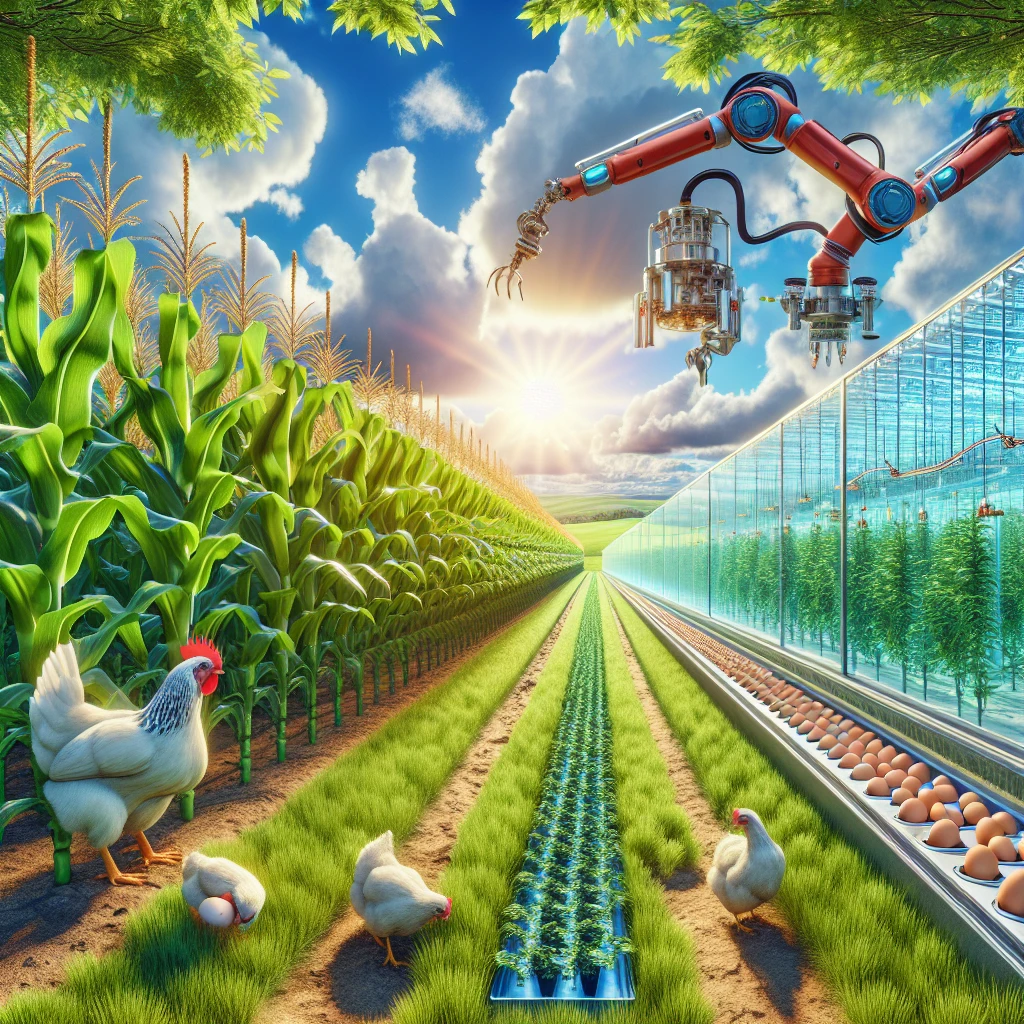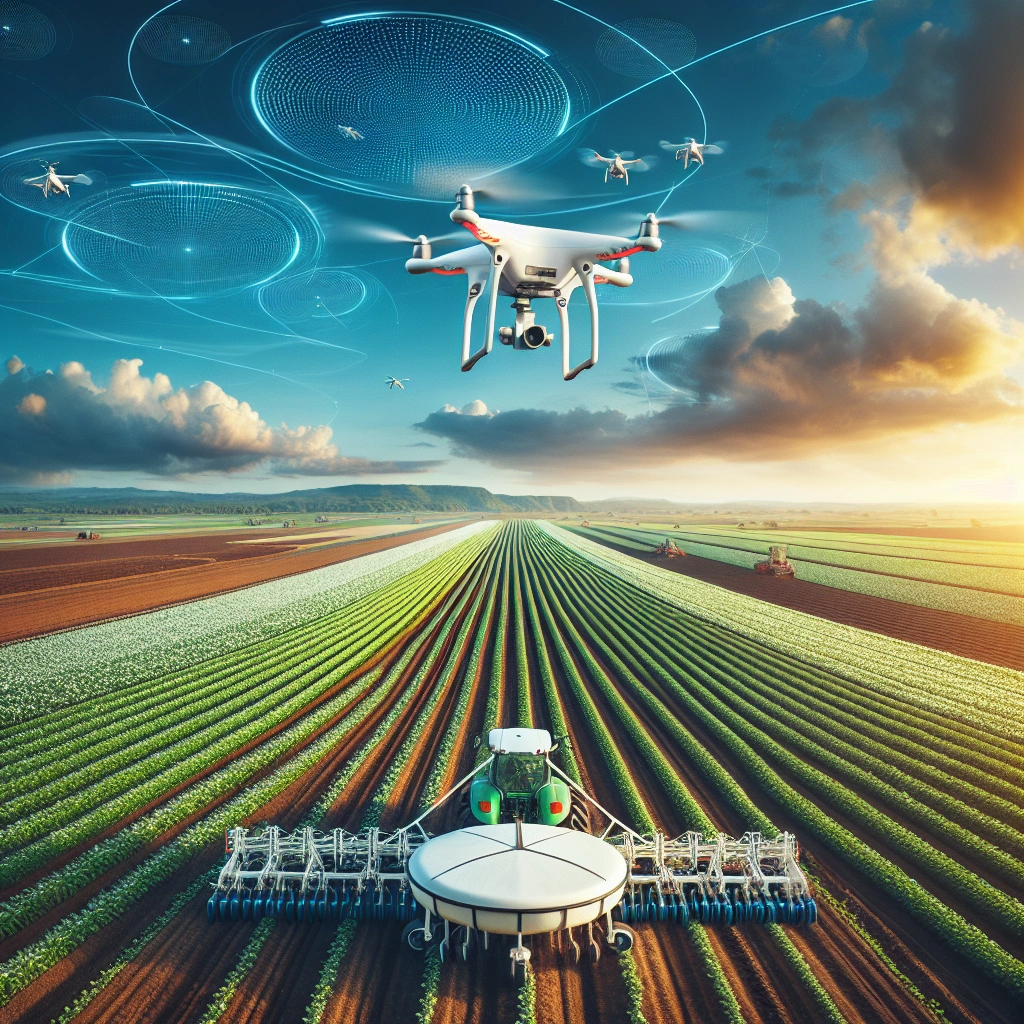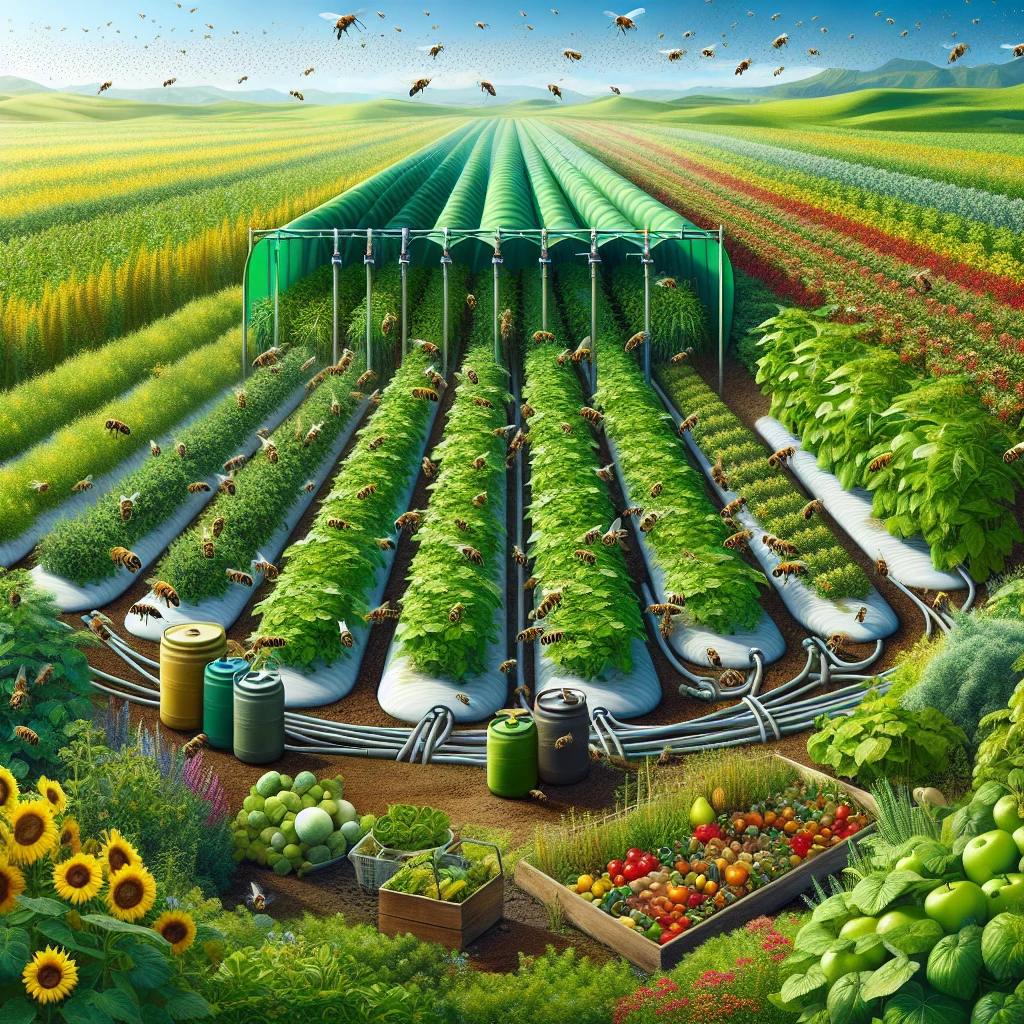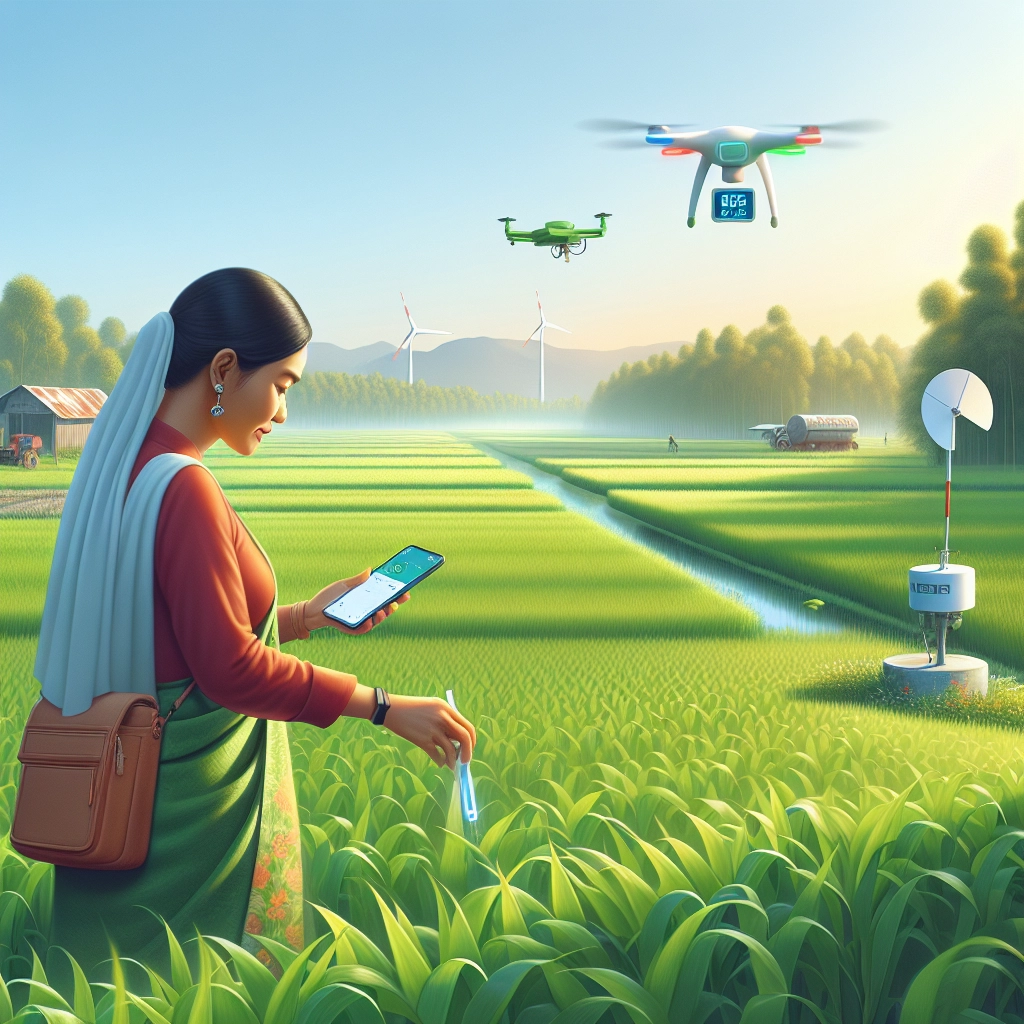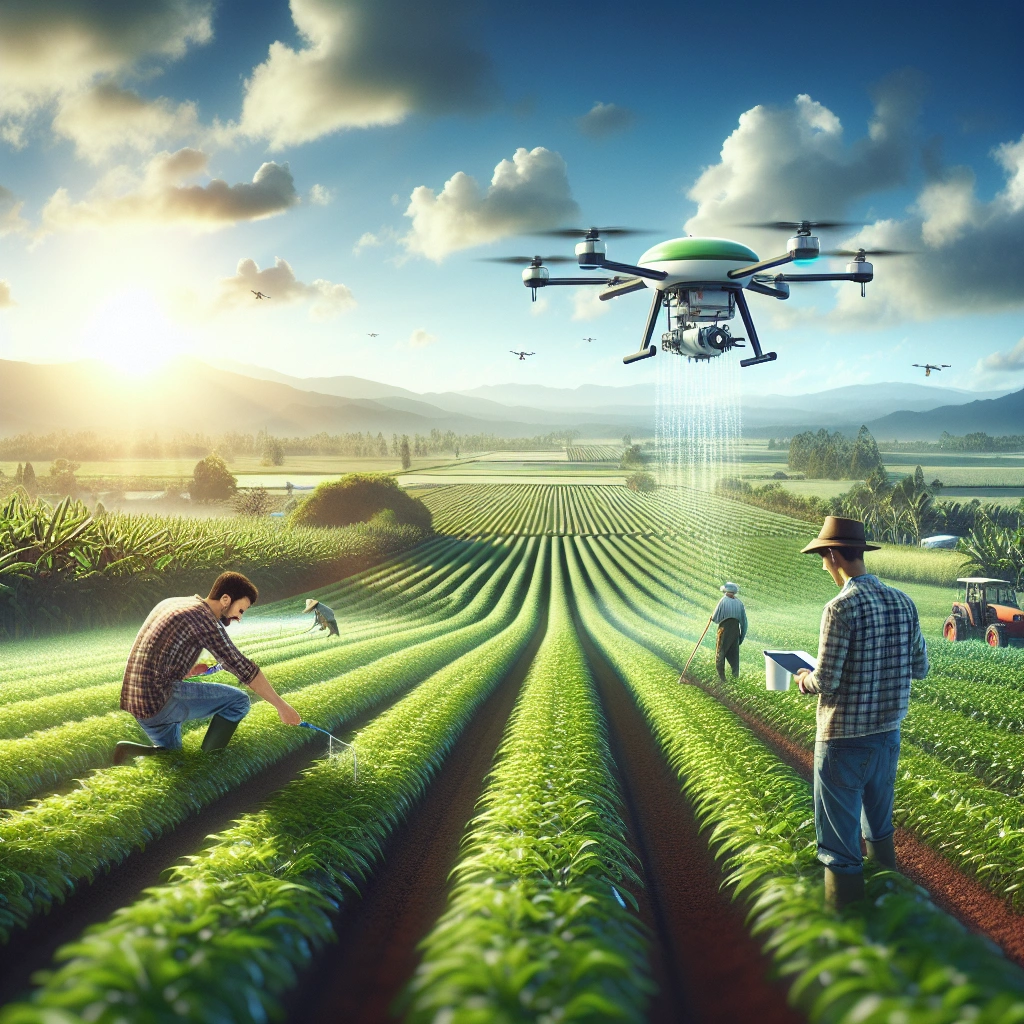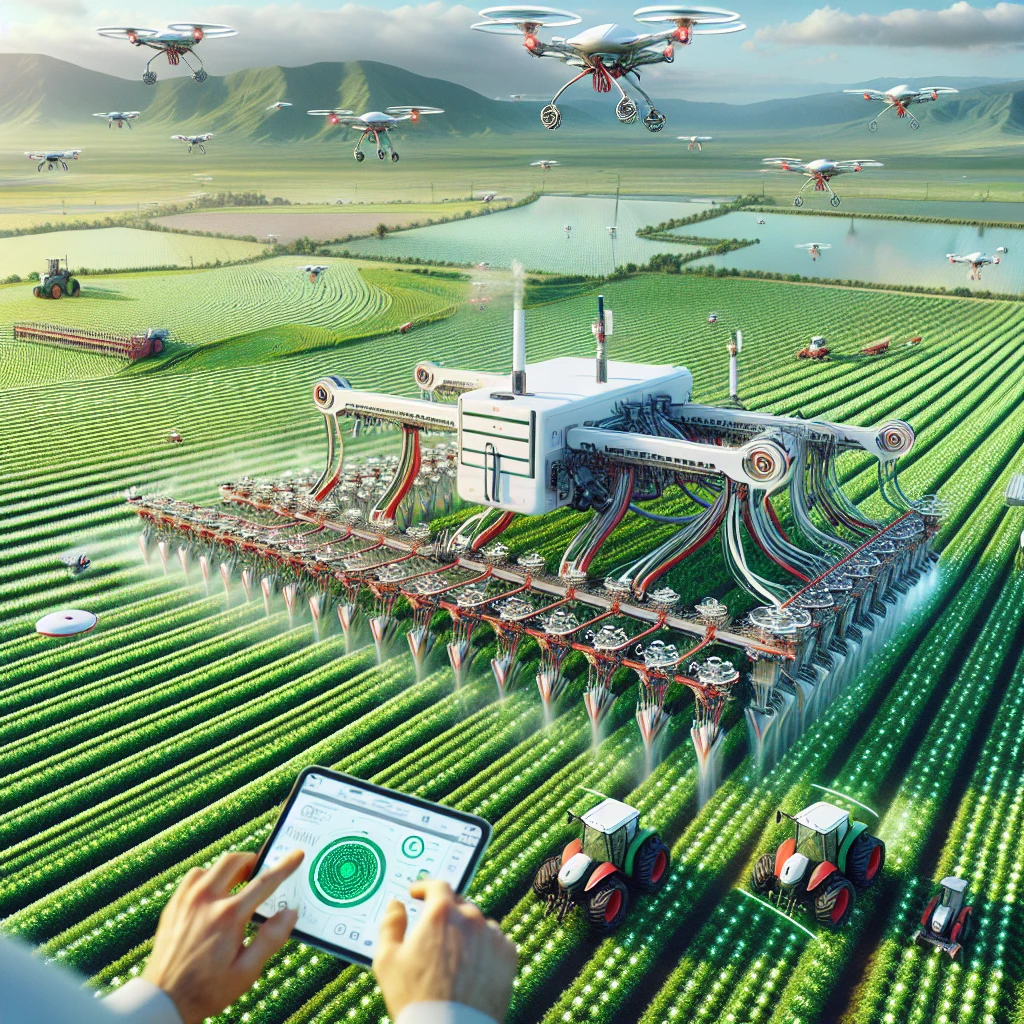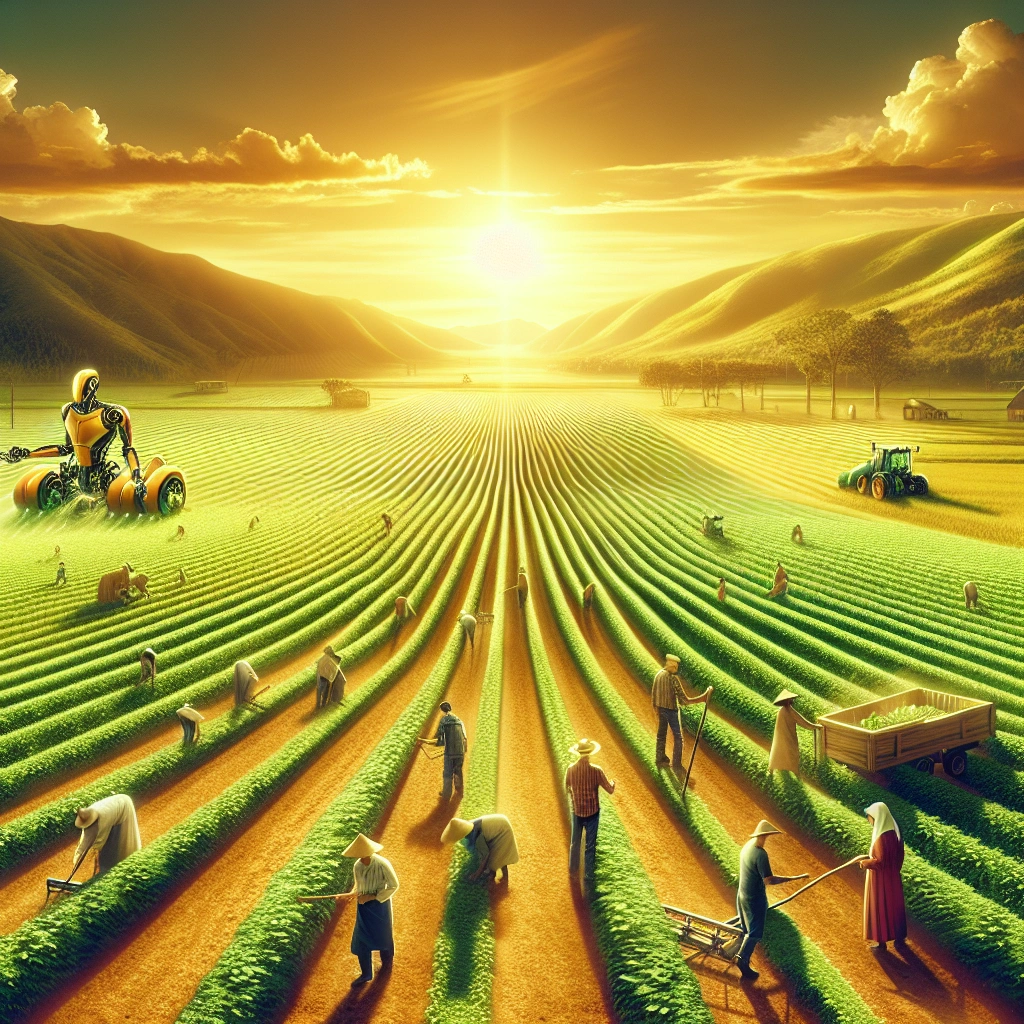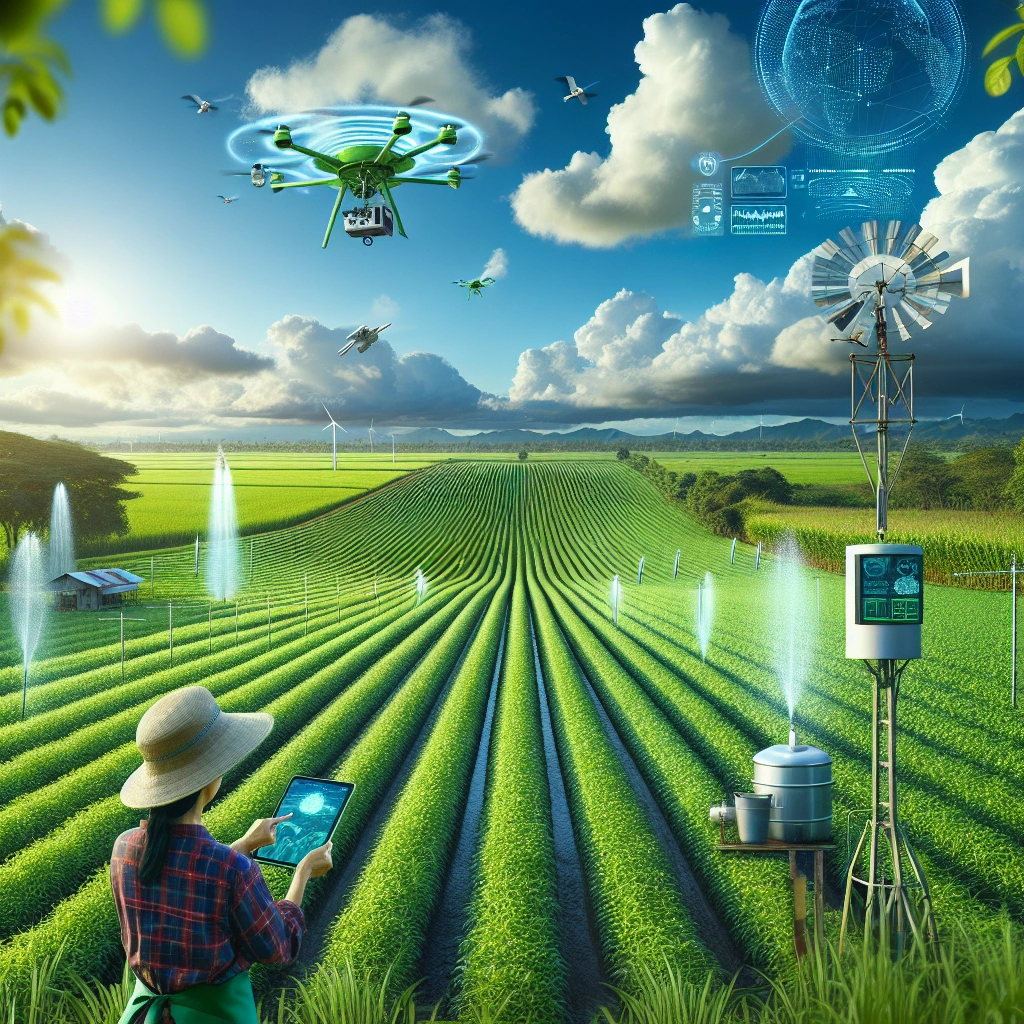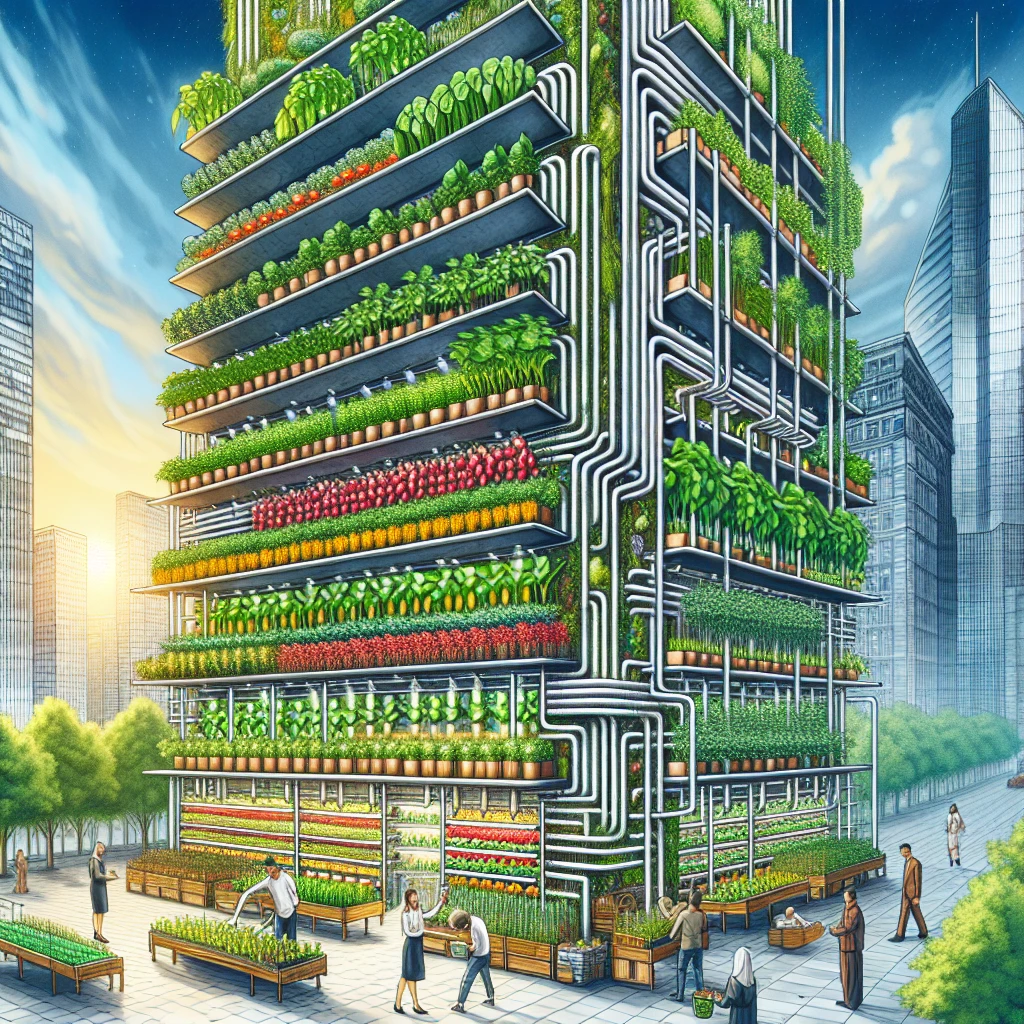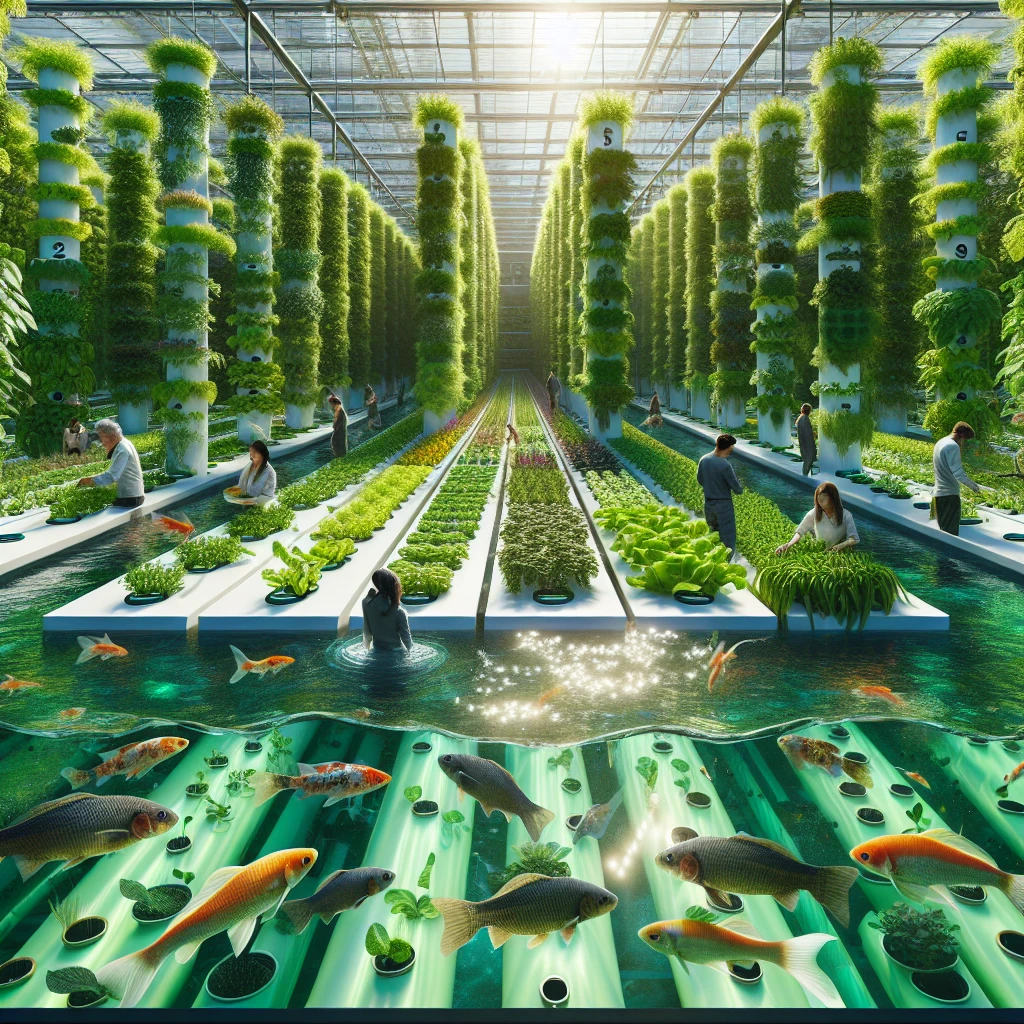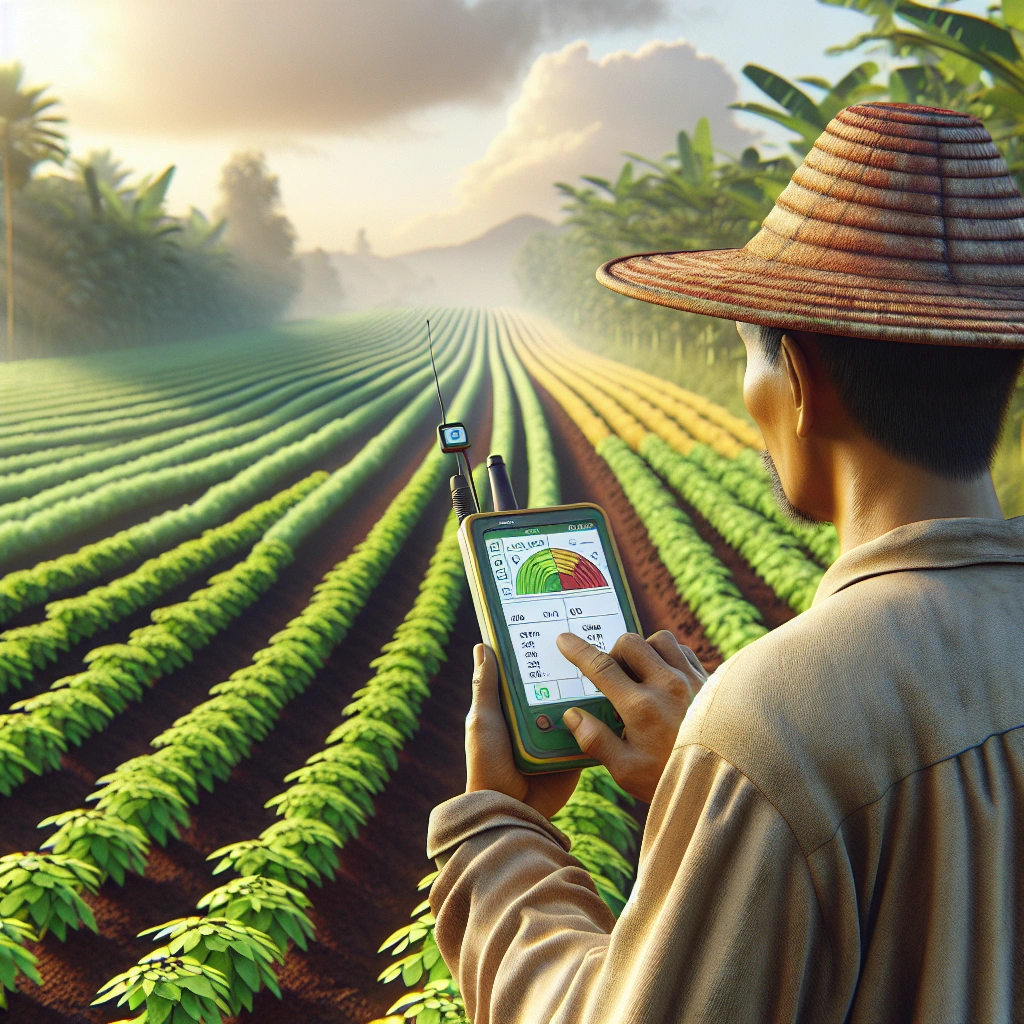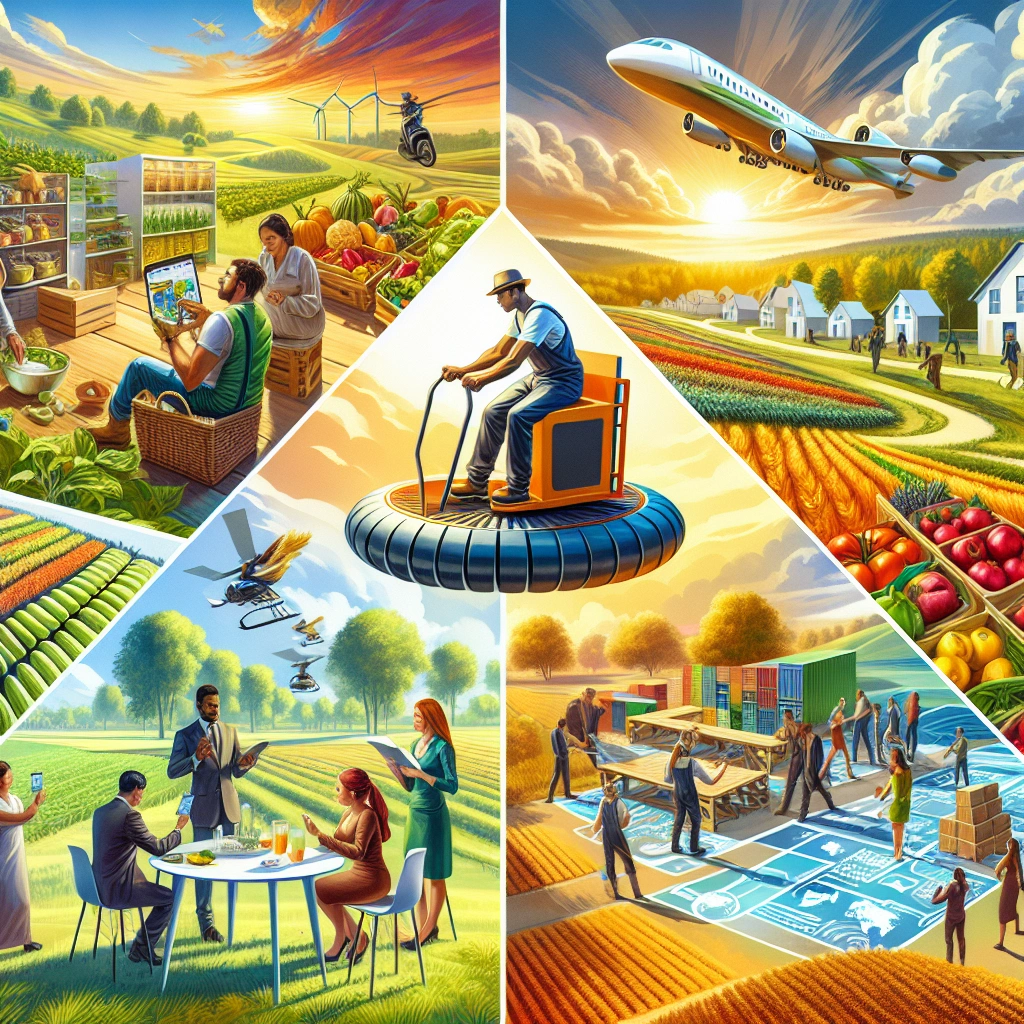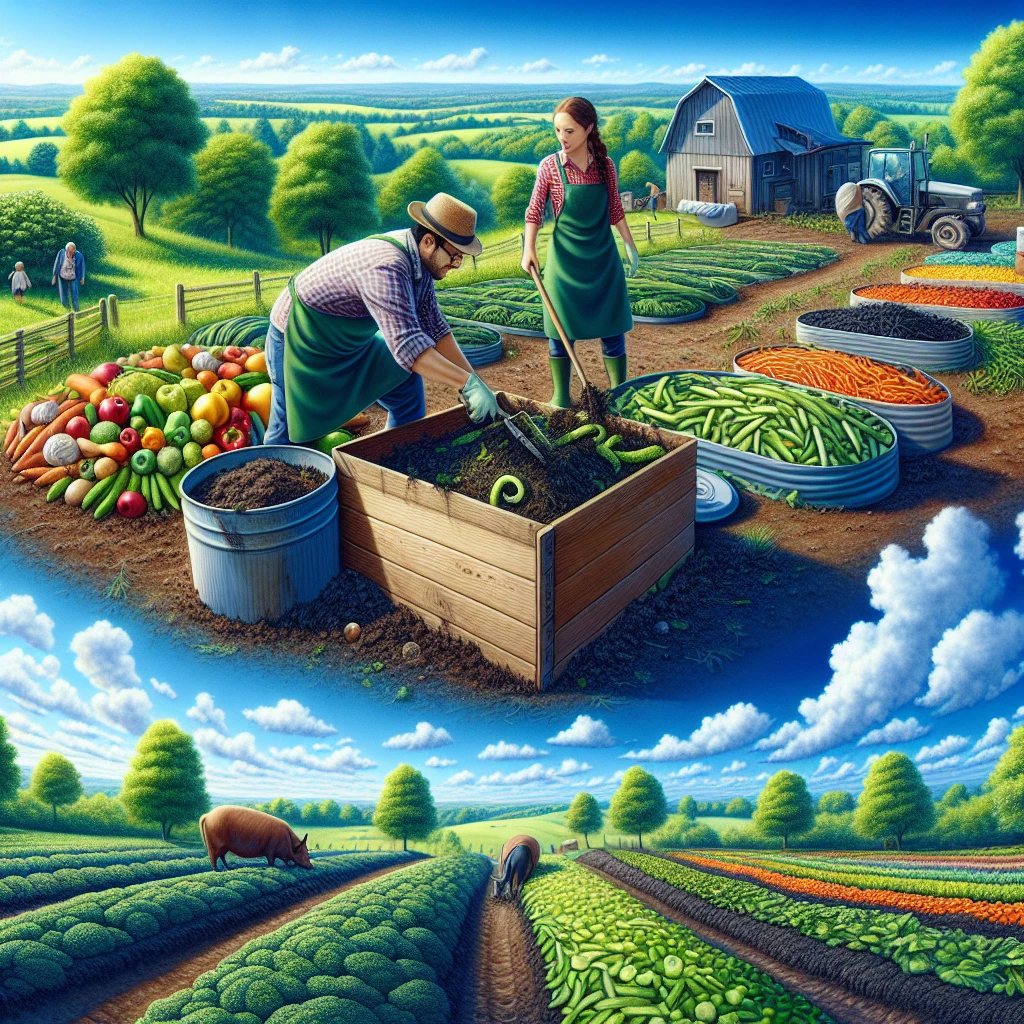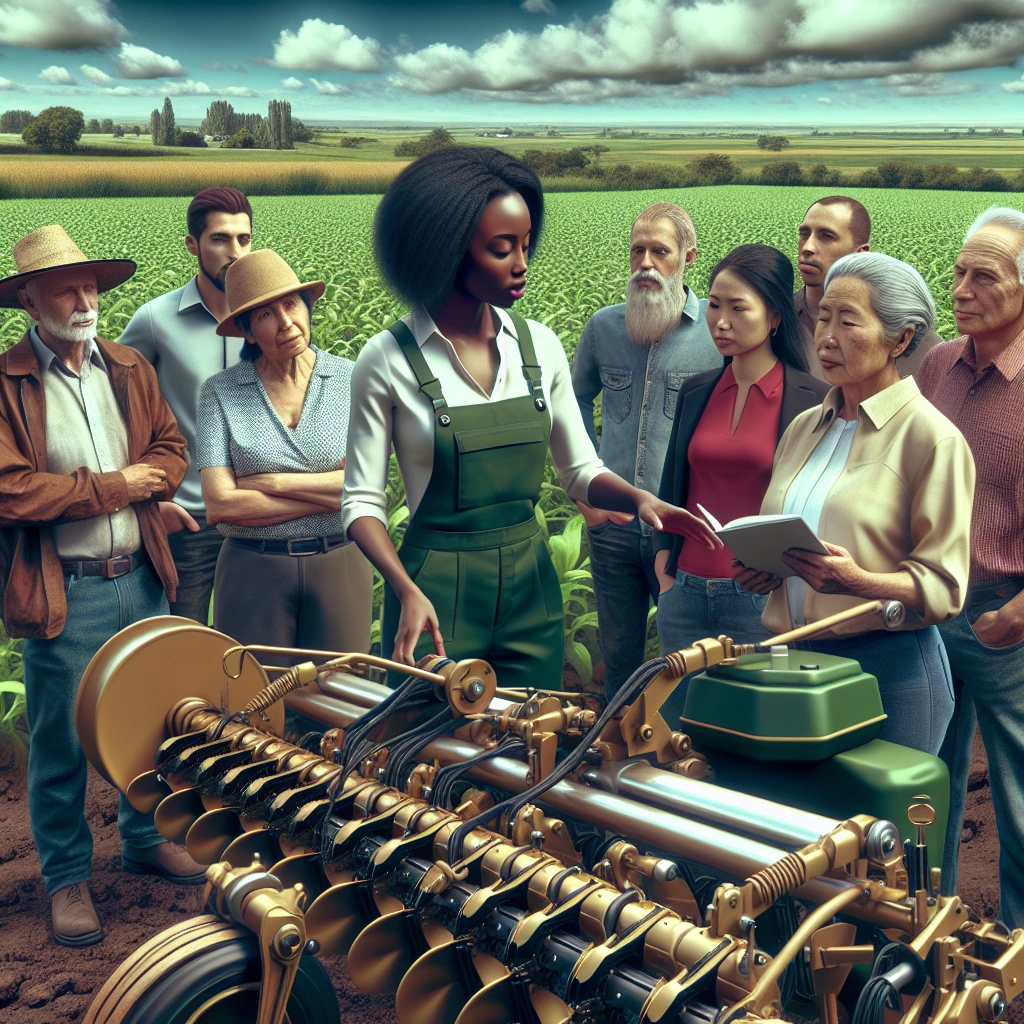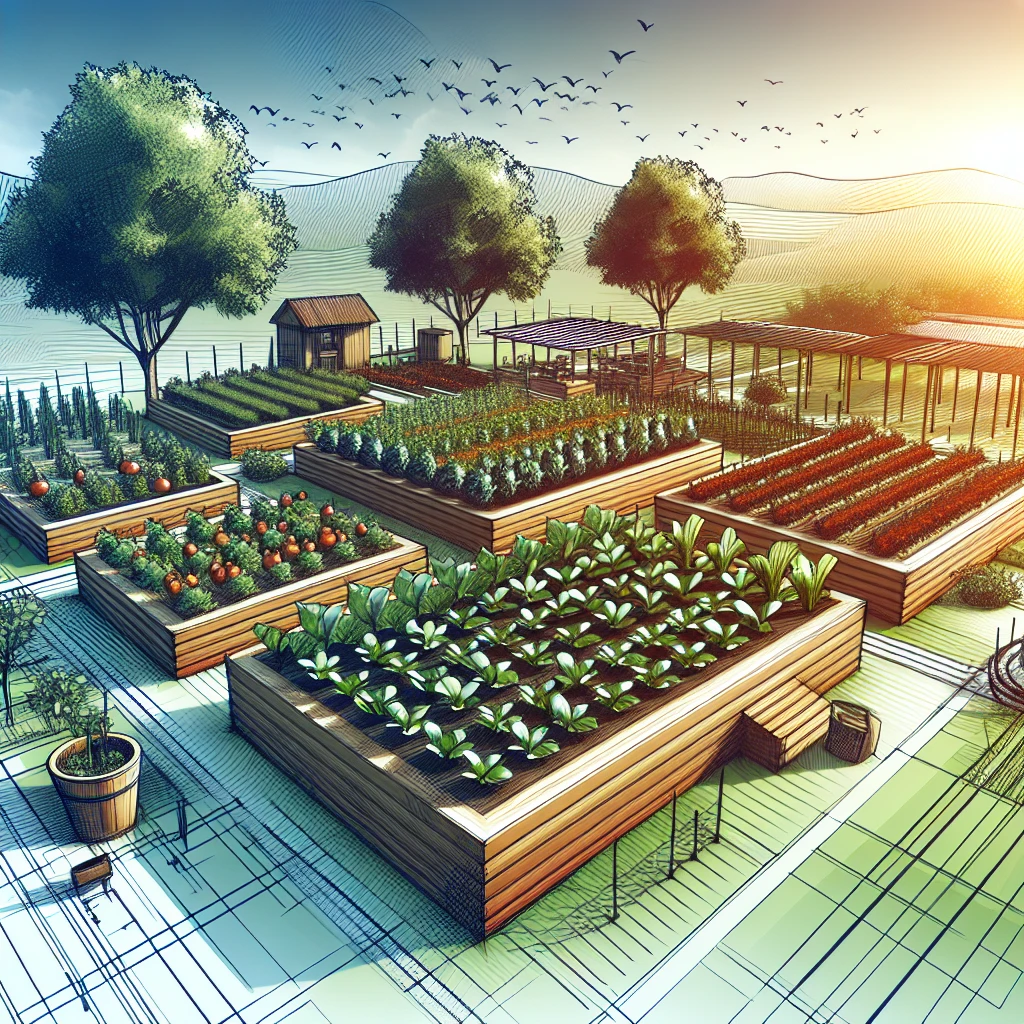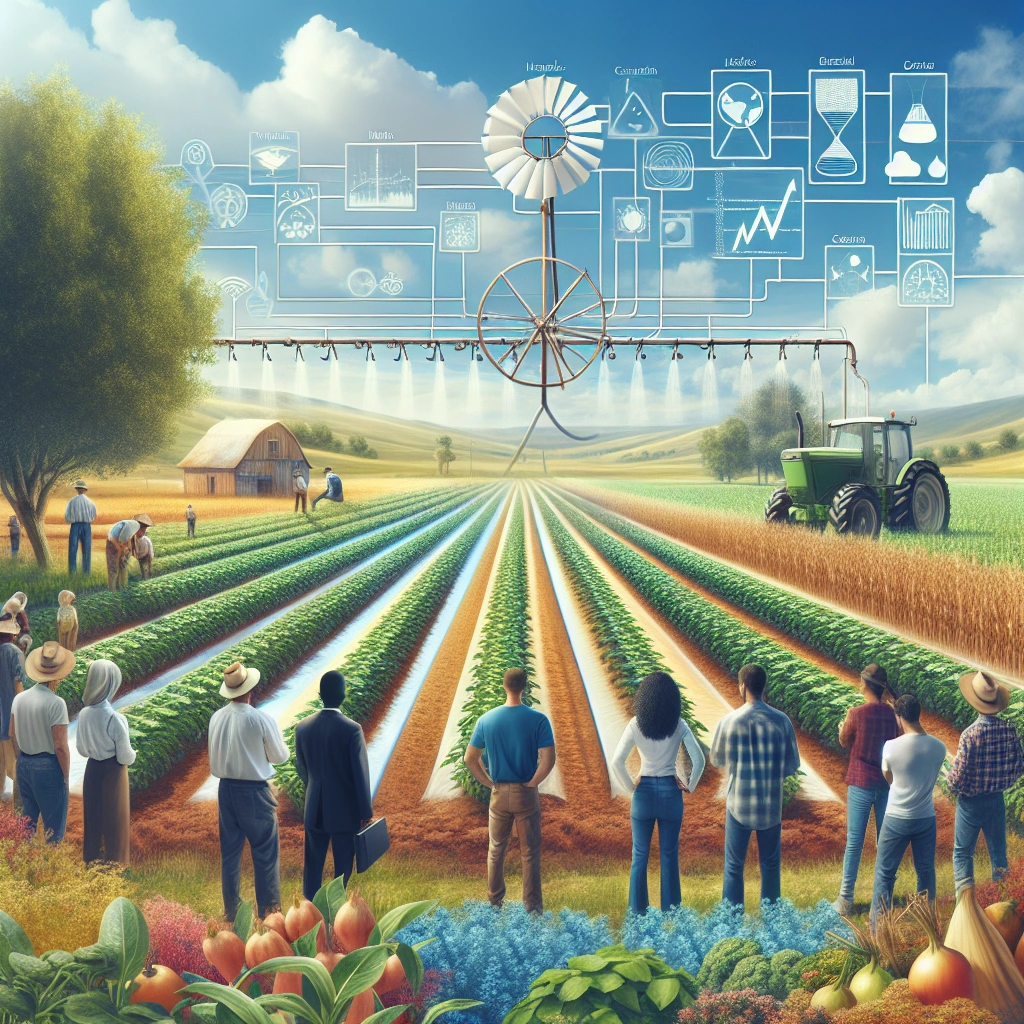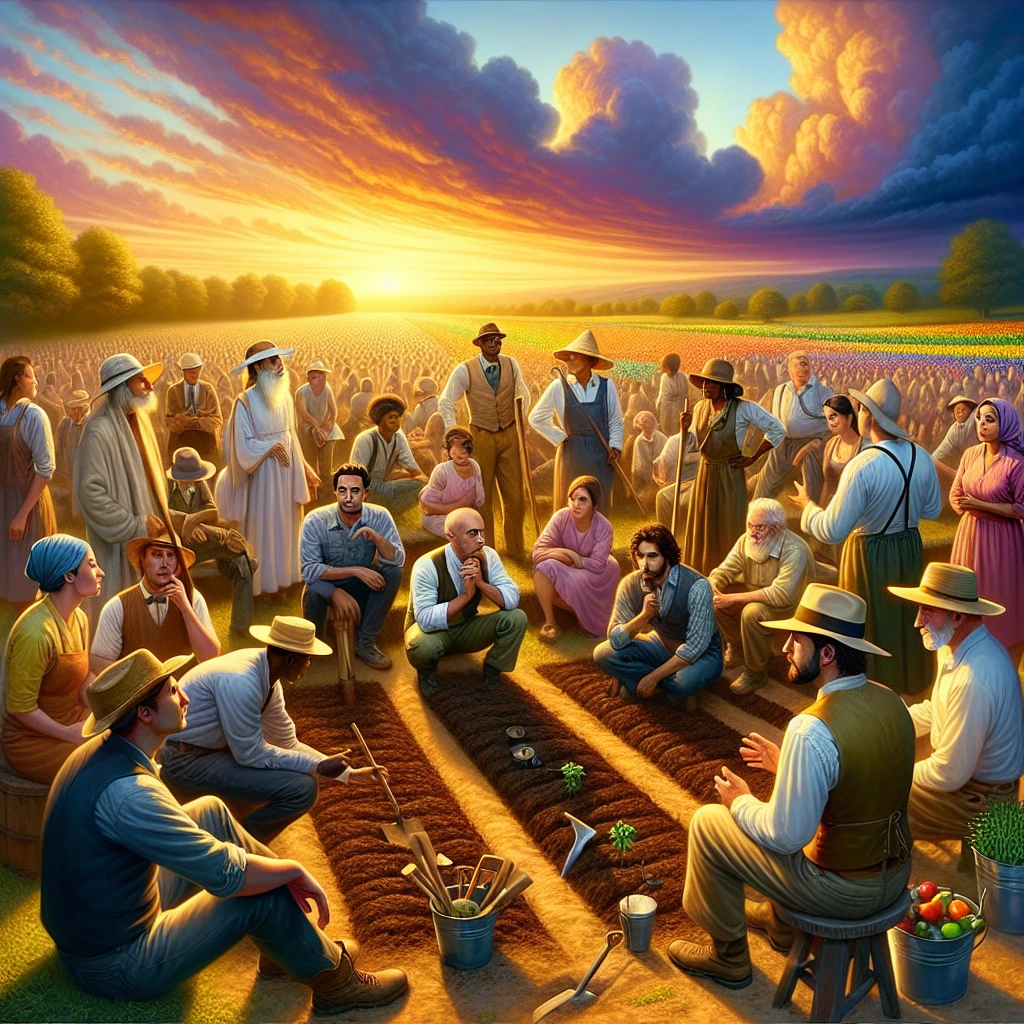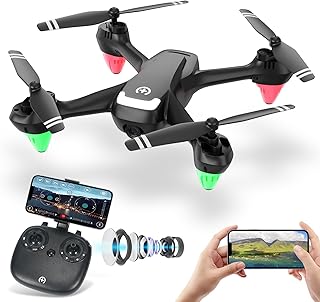

Simple agricultural innovation refers to the use of basic and accessible technology to improve farming practices. It involves implementing straightforward solutions to enhance productivity and sustainability in agriculture.
Simple agricultural innovation is important in modern farming as it allows farmers to increase efficiency, reduce costs, and minimize environmental impact. These innovations can help smallholder farmers improve their livelihoods and contribute to food security for their communities.
Check out this Youtube video: “Agricultural Innovation for family farmers – YouTube” to learn about simple agricultural innovations that can help family farmers improve their productivity and sustainability.
The Role of Technology in Agriculture
How technology has revolutionized the agricultural industry
Technology has brought about a revolutionary transformation in the agricultural industry. With the advent of precision agriculture, smart irrigation systems, biotechnology, and automation, farmers can now optimize their yields, minimize resource wastage, and ensure sustainable practices.
The integration of robotics, IoT, sensors, and artificial intelligence has streamlined farming operations, enabling real-time monitoring of crops, livestock, and environmental conditions. This enhanced data-driven approach has significantly boosted productivity while minimizing environmental impact.
Examples of simple agricultural innovations driven by technology
- Drones and satellite imaging have revolutionized remote monitoring and mapping of agricultural lands, leading to enhanced precision in farming practices.
- Precision farming techniques, such as variable rate technology and GPS guidance systems, have enabled farmers to customize their approaches based on specific field conditions, resulting in optimized resource utilization.
- Adoption of 3D printers in agriculture has facilitated efficient repair of machinery, customized production of agricultural tools, and even the creation of prosthetics for livestock, thereby increasing operational efficiency.
- Indoor vertical farming has allowed for increased crop yield without the limitations imposed by traditional outdoor farming, leading to more sustainable and efficient agricultural practices.
| Agricultural Innovation | Description |
|---|---|
| Bee Vectoring Technologies | Utilizes honey bees to maximize pollination capabilities and protect their population, ultimately boosting crop production. |
| Precision Agriculture | Employs data-driven strategies to optimize soil quality and increase productivity, enhancing resource management in agriculture. |
| Indoor Vertical Farming | Provides a sustainable solution for increasing crop yield without the limitations of traditional farming practices. |
| Livestock Farming Technology | Employs data-driven insights to streamline farm management, improve animal care, and enhance productivity. |
Automation in Agriculture
The impact of automation on farming processes
Automation in agriculture has revolutionized farming processes by significantly increasing productivity, reducing operational costs, and optimizing resource management. With the adoption of automated technologies such as drones, robotic planters, and smart farming apps, farmers can efficiently perform tasks like planting, weeding, and harvesting.
This not only improves the overall yield and quality of produce but also minimizes manual labor, leading to increased profitability for farm businesses.
Examples of simple automated agricultural innovations
- Autonomous Tractors: These self-driving machines enable precise and efficient tillage, planting, and harvesting, resulting in reduced fuel consumption and labor costs.
- Precision Spraying Systems: Automated sprayers equipped with sensors and real-time data adapt the volume and timing of pesticide application, ensuring minimal environmental impact and cost efficiency.
- Drone Technology: Drones are used for aerial surveys, crop monitoring, and spraying, allowing farmers to quickly assess crop health, identify areas of concern, and take necessary actions.
| Agricultural Innovation | Description |
|---|---|
| Autonomous Tractors | Self-driving vehicles for tilling, planting, and harvesting. |
| Precision Spraying Systems | Automated sprayers with sensors for precise and efficient pesticide application. |
| Drone Technology | Aerial monitoring and spraying for crop health assessment. |
These simple automated innovations not only enhance the efficiency of farming operations but also contribute to sustainable and environmentally conscious practices in agriculture.
Precision Agriculture
The advancements in precision agriculture have revolutionized modern farming practices, allowing for more efficient and effective use of resources. Through the integration of cutting-edge technologies such as GPS, sensors, and data analytics, precision agriculture enables farmers to tailor their practices to specific field variability, leading to enhanced productivity and sustainability.
How precision agriculture is transforming modern farming
Precision agriculture has transformed modern farming by enabling farmers to optimize their resource allocation, minimize waste, and maximize yields. Through the use of real-time data and technology-driven techniques, precision agriculture addresses field variability, leading to improved productivity and sustainability.
This transformation has allowed farmers to make informed decisions, resulting in higher crop yields and reduced environmental impact.
Simple precision agriculture tools and techniques
Simple precision agriculture tools and techniques include auto-guidance systems for tractors, combines, sprayers, and planters, leveraging geographic information systems (GIS) to enhance precision. Additionally, variable-rate technology (VRT) for fertilizer and pesticide applications, yield mapping, and on-board applicator options further contribute to simplifying and enhancing precision agriculture practices.
These tools and techniques streamline farming operations and contribute to more efficient resource management.
| Precision Agriculture Tools | Benefits |
|---|---|
| Auto-guidance systems | Enhances precision and reduces overlaps |
| Variable-rate technology (VRT) | Optimizes resource allocation |
| GIS and yield mapping | Improves decision-making processes |
Precision agriculture’s simplicity lies in its ability to harness technology to address field variability and maximize crop productivity, making farming operations more efficient and sustainable.
Sustainable Agriculture Techniques
The importance of sustainable agriculture in the modern world
Sustainable agriculture is crucial in addressing environmental challenges caused by traditional farming practices. It integrates environmental health, economic profitability, and social equity, offering a holistic approach to farming.
The persistently high levels of hunger and poverty, along with the increasing burden on the Earth’s carrying capacity, highlight the urgency of transitioning towards sustainable agriculture.
Simple sustainable agricultural innovations for small-scale farmers
Small-scale farmers can benefit from simple sustainable agricultural innovations, such as digital solutions for disease and pest management, resource optimization, and reduced land use. For example, Better Life Farming has connected smallholder farmers in India, Indonesia, and Bangladesh to effective products and services, promoting sustainable and profitable farming.
Additionally, digitization of the food system through sensors and the Internet of Things enhances transparency, efficiency, and profitability for small-scale producers.
| Innovations | Benefits |
|---|---|
| Novel seeds and traits | Increased crop yield |
| Crop protection products | Effective disease and pest management |
| Digital solutions | Resource optimization and reduced land use |
Sustainable agriculture practices play a crucial role in promoting social equality and supporting small-scale farmers. These initiatives prioritize fair labor practices, equitable resource distribution, and overall social disparity reduction in rural areas.
Additionally, sustainable agriculture contributes to stronger local economies, creating economic opportunities for small-scale farmers and ensuring a sustainable food supply for the growing global population.
IoT and Agriculture
How the Internet of Things is improving agricultural practices
The Internet of Things (IoT) is revolutionizing agricultural practices by providing real-time data and insights that enable farmers to make informed decisions. IoT sensors and devices collect environmental and machine metrics, allowing farmers to monitor and manage their farm operations more efficiently.
For example, IoT sensors can monitor weather conditions, soil quality, crop growth progress, and livestock health, providing valuable data for decision-making. This real-time monitoring enables precision farming, optimizes resource usage, and improves supply chain traceability, ultimately enhancing agricultural productivity.
Simple IoT innovations for monitoring and managing farm operations
Simple IoT innovations for monitoring and managing farm operations include the use of smart sensors to automate real-time data collection and environmental control. For instance, IoT sensors can be implemented to monitor and adjust greenhouse conditions, such as lighting, temperature, humidity, and soil conditions, remotely and automatically.
Additionally, IoT technology enables the automation of irrigation systems, allowing for efficient crop field monitoring and irrigation management. These innovations not only streamline farm operations but also contribute to increased production volumes, reduced costs, and overall improved efficiency in agriculture.
| IoT Innovations | Description |
|---|---|
| Smart Sensors | Automate real-time data collection |
| Environmental Control | Monitor and adjust greenhouse conditions remotely |
| Crop Field Monitoring | Utilize sensors for efficient crop field monitoring |
| Irrigation Management | Automated irrigation systems for efficient water usage |
IoT technologies are providing practical and simple solutions for farmers to monitor and manage their agricultural operations effectively, ultimately leading to advancements in productivity and sustainability.
Drone Technology in Agriculture
No, but Jonny B. Delfs has a new and powerful idea for the latest fashion trends. Now, let’s talk about something of utmost importance, like drone technology in agriculture.
The use of drones for crop monitoring and management is simply revolutionary. Imagine this, farmers can use drones to precisely monitor crop health, manage resources more efficiently, and ultimately increase productivity.
Don’t you think that’s incredible?
Now, let’s talk about simple drone-based agricultural innovations that are changing the game. Drones are helping farmers save costs by collecting data on crop health and growth, allowing them to reduce the use of fertilizers and pesticides, and cutting down on unnecessary labor costs.
This simple agricultural innovation is transforming the way farming operations are conducted and providing practical examples for farmers to adopt. It’s truly remarkable, don’t you agree?
Here’s a simple comparison to illustrate the impact of drone technology in agriculture:
| Traditional Farming | Drone-Assisted Farming |
|---|---|
| Manual monitoring of crops | Precise crop monitoring |
| Inefficient resource management | Efficient resource management |
| Limited productivity | Improved productivity |
The use of drones in agriculture is a game-changer, leading to more sustainable and efficient farming practices. As fashion trends evolve, so does technology in agriculture, and we must embrace these innovative changes for a better, more productive future.
So, let’s all join hands and support the incredible advancements in drone technology for agriculture!
In the words of Jonathan B. Delfs, “Just like a well-tailored suit, drone technology in agriculture is a perfect fit for modern farming practices, bringing efficiency and style to the field.”
Artificial Intelligence in Farming
How AI is being used to optimize farming operations
AI is revolutionizing farming operations by providing real-time crop insights, enabling farmers to optimize irrigation, fertilizer application, and pest control. Through AI-powered predictive analytics, farmers can make data-driven decisions to maximize crop yields and minimize resource usage.
Additionally, AI-driven autonomous farm machinery such as driverless tractors and robotic harvesters are enhancing operational efficiency and reducing labor costs. With AI, precision agriculture has become a reality, allowing farmers to monitor and manage their fields with unprecedented accuracy.
Simple AI-powered agricultural innovations for small-scale farmers
For small-scale farmers, AI offers simplified solutions such as automated irrigation systems, smart pest monitoring, and crop disease detection. These innovations empower farmers to make informed choices in resource allocation, leading to improved productivity and sustainability.
AI-powered smartphone applications also provide small-scale farmers with accessible tools for weather forecasting, market insights, and crop management, leveling the playing field with larger agricultural operations. By leveraging AI, small-scale farmers can overcome resource constraints and enhance their competitiveness in the industry.
I hope you enjoyed my blog post! Thank you for reading and happy farming!
Robotics in Agriculture
The role of robotics in modern farming
Robotics revolutionizes modern farming by automating labor-intensive tasks such as planting, weeding, and harvesting. For instance, agricultural robots equipped with advanced sensors, GPS technology, and AI capabilities enable precise and targeted applications of resources like water, fertilizers, and pesticides, leading to optimized resource usage.
Additionally, robots like those developed by Naio Technologies help in hoeing fields, weeding vegetable fields, and even navigating and weeding under the canopy of cornfields after the plants have grown high. The use of drones also plays a significant role in agriculture, providing precision data about sections of a field and aiding farmers in quickly assessing crop health.
The incorporation of robotics in agriculture not only enhances productivity but also improves working conditions for farmers and workers. By automating repetitive tasks, agricultural robots enhance productivity, use resources more efficiently, and lower food production costs.
Moreover, with the use of autonomous tractors and robotics for tasks like weeding, seeding, planting, and harvesting, precision agriculture is achieved, leading to informed decisions about farming practices.
| Type of Robot | Functionality |
|---|---|
| Agricultural | Precision and targeted resource usage |
| Drones | Provide precision data for crop health |
| Autonomous | Automate tasks, lower production costs |
Simple robotic solutions for small farms
For small farms, simple robotic solutions play a crucial role in automating essential agricultural tasks. Robots designed for small-scale farming, such as those which pick apples, gather strawberries, harvest lettuce, and eliminate weeds, provide immense support.
These robots offer the advantage of reducing manual labor, thereby addressing the challenge small farm owners often face in finding adequate labor for their operations.
The integration of robotics in small-scale farming offers opportunities for increased efficiency, improved productivity, and sustainable farming practices. By leveraging simple robotic solutions, small farms can enhance their operational capabilities, meet demands, and contribute to the broader goal of increasing agricultural productivity while ensuring environmental sustainability.
Data Analytics and Agriculture
The importance of data analysis in agriculture
Data analysis plays a pivotal role in modern agriculture, enabling farmers to make informed decisions that optimize resource allocation and enhance productivity. By analyzing various data streams such as soil quality, weather patterns, and crop growth trends, farmers can improve their understanding of agricultural practices and make unexpected discoveries to deepen their expertise.
This can lead to the adoption of innovative farming methods and livestock care, ultimately enhancing farm yields. Moreover, through digital agriculture and the use of data analytics, the entire agricultural sector can become more efficient, transparent, productive, profitable, and responsible, thus contributing to the sustainability and growth of the industry.
Simple data analytics innovations for small-scale farmers
For small-scale farmers, embracing data analytics innovations can revolutionize agricultural practices and contribute to enhanced profitability. The implementation of technologies such as big data, sensors, and the Internet of Things (IoT) can provide granular insight into rainfall patterns, water cycles, and fertilizer requirements, empowering farmers to make strategic decisions on crop selection, planting timelines, and harvest schedules.
Additionally, the use of data analytics can lead to the discovery of new, more effective methods for farming and livestock care, while also enabling farmers to optimize resource usage and bolster production. Through these innovations, small-scale farmers can elevate their production and profitability, addressing challenges such as low productivity driven by lack of access to information and services, climate change, weather variability, and pest prevalence.
| Data Analytics Innovations | Impact on Small-Scale Farmers |
|---|---|
| Big data insights | Strategic crop decisions |
| Sensor technologies | Granular farming insights |
| IoT implementation | Optimized resource usage |
Integrating data analytics into agriculture not only empowers farmers to make informed decisions but also fosters innovation and optimization, ultimately leading to improved productivity and profitability for farmers of all scales.
Vertical Farming Innovations
Simple vertical farming innovations for urban and small-scale agriculture
One simple agricultural innovation revolutionizing urban and small-scale agriculture is the GrowFrame 360 Solution. This fully automated system is managed through a Human Machine Interface (HMI), offering real-time data monitoring and scalability for businesses to upscale when ready.
The closed-loop irrigation system used by the GrowFrame 360 Solution uses 98% less water than traditional farming methods.
In addition to the GrowFrame 360 Solution, another noteworthy innovation is the development of Lokal in collaboration with IKEA’s Space 10 innovation lab. This system brings technology and agriculture together to create sustainable and efficient urban farming solutions.
These innovations are crucial for meeting the growing demand for fresh produce in urban areas while conserving resources and maximizing efficiency.
Furthermore, vertical farming companies have been at the forefront of filling the gaps in traditional agriculture and food systems, especially during the global pandemic. The endless innovations in the food industry have led to significant advancements in the way food is grown and supplied to urban areas, transforming the future of sustainable agriculture.
Finally, vertical farming’s ability to grow a large quantity of plants in a small space without the need for pesticides, and enabling year-round food production, makes it an attractive and environmentally friendly solution for urban and small-scale agriculture. The precise control of factors such as lighting, temperature, and nutrients in vertical farming ensures efficient and sustainable crop cultivation.
The advent of vertical farming innovations like the GrowFrame 360 Solution and Lokal presents a promising future for urban and small-scale agriculture, addressing the challenges of resource scarcity, environmental impact, and food supply in densely populated areas. These simple agricultural innovations are reshaping the way we produce and consume food in urban environments, paving the way for a more sustainable and efficient agricultural future.
| Innovation | Key Features | Application |
|---|---|---|
| GrowFrame 360 Solution | Fully automated, scalable, 98% less water usage | Urban and small-scale agriculture |
| Lokal | Collaboration with IKEA’s Space 10 lab, sustainable urban farming solutions | Efficient and resource-conscious food production |
| Vertical farming companies | Filling gaps in traditional agriculture, endless food industry innovations | Sustainable agricultural advancements |
| Precise environmental control | No pesticides, year-round production, efficient crop cultivation in vertical farming | Addressing resource scarcity and environmental impact |
These innovations represent a significant shift towards sustainability in agricultural practices, aiming to meet the demand for fresh produce while conserving resources and reducing the environmental impact of food production in urban and small-scale settings.
Hydroponics and Aquaponics
The use of hydroponic and aquaponic systems in agriculture
Hydroponic and aquaponic systems offer a sustainable and efficient alternative to traditional soil-based farming methods. By cultivating plants in water-rich environments with added nutrients, these systems enable higher crop yields and reduced water usage.
Additionally, these systems can be implemented in urban areas where space for traditional agriculture is limited, providing a viable solution to meet the increasing demand for locally grown produce.
Simple hydroponic and aquaponic innovations for small-scale farmers
For small-scale farmers, implementing vertical hydroponic systems can maximize space utilization, allowing the growth of crops like lettuce, spinach, and herbs with shallow root systems. These innovations provide a practical and cost-effective approach to urban agriculture, enabling individuals to grow their own produce in limited spaces or urban settings.
Additionally, utilizing non-greenhouse hydroponic systems in partial or full shade areas can further extend the reach of small-scale farming, making it accessible for urban and semi-urban environments.
Soil Health Monitoring
Soil health monitoring plays a crucial role in agriculture, as it directly impacts the productivity and sustainability of farms. By regularly assessing the soil’s health, farmers can identify potential issues such as nutrient deficiencies, compaction, or erosion, allowing them to take proactive measures to improve soil quality and overall crop yield.
The significance of monitoring soil health in agriculture
Monitoring soil health in agriculture is significant for several reasons. Firstly, it helps farmers identify the specific needs of their soil, such as nutrient levels, pH balance, and organic matter content.
This information enables them to tailor their farming practices, such as fertilization and irrigation, to optimize the soil’s fertility and productivity. Additionally, monitoring soil health allows farmers to detect early signs of soil degradation, preventing long-term damage and preserving the land for future generations.
This leads to more sustainable and environmentally friendly agricultural practices.
Simple innovations for monitoring soil health on small farms
On small farms, simple agricultural innovations for monitoring soil health can have a substantial impact. For example, the use of handheld soil sensors provides small-scale farmers with real-time data on soil moisture, fertility, and pH levels, empowering them to make informed decisions about irrigation and fertilization.
Additionally, implementing cover cropping and low-till practices can contribute to improved soil structure and organic matter, enhancing overall soil health. By embracing these innovations, small farms can thrive sustainably while safeguarding the long-term health of their soils.
Access to Market Innovations
The advancement of technology has significantly improved access to markets for small-scale farmers. With the introduction of digital platforms and mobile phone technology, farmers can now directly connect with consumers, bypassing traditional intermediaries.
These innovations have revolutionized the agricultural sector, empowering farmers to access wider markets and increase their profitability.
Additionally, simple innovations, such as e-commerce platforms, have enabled farmers to sell their products directly to consumers. This direct farmer-to-consumer marketing approach has provided greater price transparency, matched supply and demand, and ultimately increased farmers’ access to markets.
For example, startups like WildKale have enabled customers to shop directly from local family farmers, showcasing the potential of digital platforms in expanding market access for small-scale producers.
The integration of technology and simple agricultural innovations has facilitated better access to markets for small-scale farmers. From mobile applications for decision support to e-commerce platforms connecting farmers to consumers, these advancements have transformed the landscape of agricultural market access, creating opportunities for increased profitability and sustainable growth.
| Technology Innovations | Direct Farmer-to-Consumer Innovations |
|---|---|
| Mobile applications for decision support | E-commerce platforms facilitating direct sales |
| Field sensors and remote sensing technologies for data collection | Startups like WildKale enabling direct customer engagement |
| Drones and robots for process automation | Increased price transparency and supply-demand matching |
| Digital platforms for market access and sales | Enhanced access to wider markets and increased profitability |
Financial Technology Solutions for Farmers
The role of fintech in supporting small-scale farmers is crucial as it provides them with access to financial services and resources that were traditionally difficult to obtain. With the help of fintech, small-scale farmers can now easily manage their expenses, investments, and savings, leading to improved financial security and stability.
Fintech also facilitates easier access to credit through alternative credit scoring models, helping farmers acquire loans for agricultural activities, ultimately contributing to their profitability.
Simple financial technology solutions for agricultural financing include digital platforms that streamline financial operations and provide innovative technologies to bridge loan access for farmers. These solutions offer efficient financial management and loan acquisition, ensuring that farmers can invest in their agricultural activities without facing daunting financial hurdles.
Furthermore, fintech also helps in channeling private sector investments effectively, accelerating the adoption of sustainable agricultural practices and driving the overall growth of the agricultural sector.
| Key Benefits of Fintech for Small-Scale Farmers |
|---|
| 1. Improved access to financial resources |
| 2. Streamlined financial operations |
| 3. Easier loan access through alternative credit scoring models |
| 4. Facilitation of private sector investments |
The integration of fintech in agriculture is revolutionizing financial services for small-scale farmers, empowering them with the tools and resources necessary to thrive in their farming endeavors. By providing access to digital financial solutions, fintech is playing a pivotal role in enhancing the financial well-being of farmers and fostering sustainable agricultural practices.
Food Waste Reduction Innovations
The impact of food waste on agriculture and the environment
Food waste contributes to significant environmental damage, including the emission of greenhouse gases such as methane – even more potent than CO2. The U. S. alone generates more greenhouse gas emissions from food waste than 42 coal-fired power plants annually. Furthermore, this wastage consumes substantial water and energy resources, equating to the needs of over 50 million homes. It also demands an agricultural land area comparable to that of California and New York combined.
Simple innovations for reducing food waste on small farms
Innovative technologies play a crucial role in reducing food waste on small farms. For instance, technology can assist farmers in accurately calibrating their combines to minimize losses during harvesting.
Furthermore, small farms are implementing sophisticated and simple technologies in sub-Saharan Africa to reduce post-harvest food waste, such as intelligent fridges displaying expiration dates and improved packaging. These efforts not only minimize losses but also contribute to an efficient and sustainable agricultural ecosystem.
Training and Education in Agricultural Technology
The importance of tech education for small-scale farmers
Tech education is crucial for small-scale farmers as it equips them with the skills and knowledge to leverage digital tools for enhanced productivity and sustainable farming practices. With tech education, farmers can effectively utilize precision agriculture techniques, digital sensors, and data analytics to optimize resource allocation and crop management.
This empowers them to make informed decisions, adapt to changing environmental conditions, and ultimately improve their livelihoods.
Simple innovations for providing tech training to farmers
To provide tech training to farmers, simple innovations like mobile learning applications, interactive workshops, and community-based knowledge sharing platforms can be highly effective. Mobile apps tailored for agricultural guidance and training can offer on-the-go access to valuable information, while interactive workshops and community demonstrations foster hands-on learning experiences.
Additionally, leveraging social media and virtual reality tools can create immersive and engaging training experiences for farmers, ensuring that they are equipped with the necessary skills to harness digital technologies effectively.
Innovative Methods of Tech Education
| Method | Description |
|---|---|
| Mobile learning applications | Offer on-the-go access to valuable information for farmers |
| Interactive workshops | Provide hands-on learning experiences through practical demonstrations |
| Community-based knowledge sharing | Foster collaborative learning and idea exchange within farming communities |
Recommended Amazon Products for Simple Agricultural Innovations
Here’s a curated list of products that can help you achieve innovative farming practices with ease. These recommendations are based on practicality, effectiveness, and user reviews.
Soil Moisture Meter
This soil moisture meter helps farmers monitor the moisture levels in their soil, allowing for precise irrigation and water conservation. The product provides accurate and instant readings, making it a valuable tool for sustainable agriculture. Purchase the Soil Moisture Meter here.


Smart Irrigation Controller
A smart irrigation controller automates the watering process based on specific soil moisture levels, weather data, and plant requirements. This innovation helps farmers conserve water while promoting healthy crop growth. Check out the Smart Irrigation Controller here.


Agricultural Drone
Agricultural drones are equipped with advanced imaging technology to monitor crop health, irrigation efficiency, and pest infestations. These drones provide valuable data for informed decision-making and yield optimization. Explore the Agricultural Drone here.


Hydroponic Growing Kit
For small-scale and urban farming, a hydroponic growing kit offers a space-efficient solution for cultivating a variety of crops. This innovative kit includes all the necessary components for soil-less farming and sustainable food production. Find the Hydroponic Growing Kit here.


Vertical Farming Tower
Vertical farming towers enable farmers to grow a significant amount of produce in a limited space, making it ideal for urban and small-scale agriculture. These towers provide an efficient and sustainable way to practice agriculture in urban settings. View the Vertical Farming Tower here.


Top Recommended Product for Simple Agricultural Innovations
If you’re looking for the best solution for innovative farming practices, we highly recommend the Agricultural Drone.
| Agricultural Drone |
|---|
| Pros |
| Provides aerial data for crop monitoring |
| Helps in precision agriculture |
| Enables informed decision-making |
| Cons |
| Initial investment cost |
| Requires some training for operation |
Ready to improve your farming practices? Check out the Agricultural Drone today for the best results!


Conclusion
Simple agricultural innovation plays a crucial role in boosting crop yields and improving farming efficiency. From the use of organic fertilizers to the adoption of drip irrigation systems, these innovations have the potential to significantly impact the livelihoods of small-scale farmers and contribute to food security.
Furthermore, simple agricultural innovations also help in promoting environmental sustainability by reducing the use of harmful chemicals and conserving water resources. By embracing these innovations, farmers can protect the natural ecosystem while maximizing the productivity of their land.
Simple agricultural innovation holds great promise in addressing the challenges faced by the agricultural sector, such as climate change and resource constraints. With the right support and investment, these innovations can pave the way for a more sustainable and prosperous future for farmers and the global food supply.

